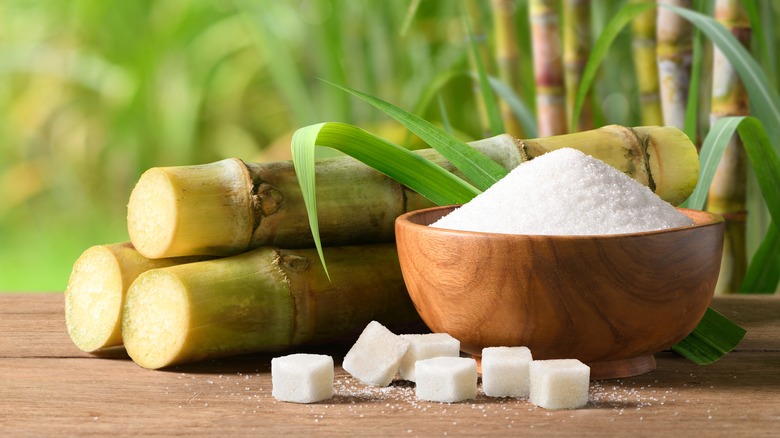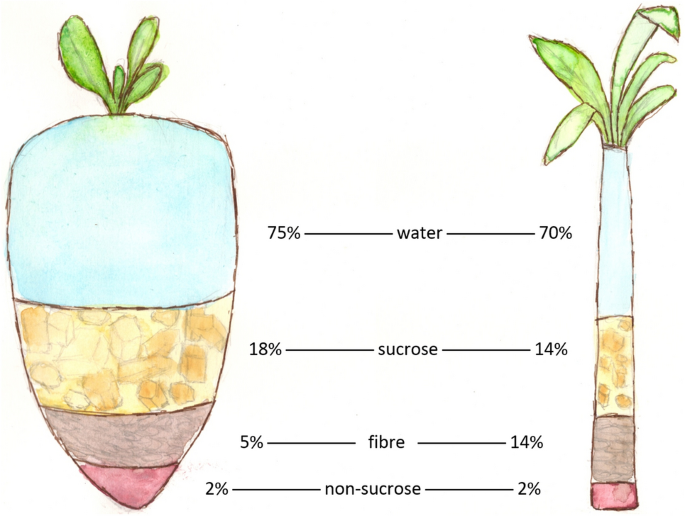The sourcing of beet sugar vs cane sugar affects eco-friendliness in the sugar industry.
The sourcing of beet sugar vs cane sugar affects eco-friendliness in the sugar industry.
Blog Article
Discover the Uses and Benefits of Beet Sugar Vs Cane Sugar in Your Daily Diet
Checking out the distinctive top qualities of beet and cane sugar reveals more than just their sweetening abilities; it highlights their one-of-a-kind effect on health and culinary arts. Beet sugar, understood for its subtle flavor, is usually preferred in delicate desserts, whereas cane sugar, with its hint of molasses, includes richness to robust meals. Each kind holds its very own dietary profile and glycemic ramifications, inviting a deeper understanding of their functions in a balanced diet and sustainable consumption practices.
Origin and Production Procedures of Beet and Cane Sugar

The unique climates and dirt kinds required for growing sugar beetroots and sugarcane add to differences in their farming techniques and geographical distribution, affecting the business economics and sustainability of their manufacturing. beet sugar vs cane sugar.
Nutritional Comparison Between Beet Sugar and Cane Sugar
Regardless of stemming from different plants, beet sugar and cane sugar are nutritionally really similar, both mainly including sucrose. Each supplies concerning 4 calories per gram, equating to roughly 16 calories per tsp. Structurally, both sugars are made up of around 99.95% sucrose, with very little quantities of other materials like wetness and trace minerals, which do not considerably alter their nutritional profiles.

Eventually, when selecting between beet sugar and cane sugar based useful source upon dietary content alone, both deal similar advantages and downsides as they are essentially kinds of the same particle-- sucrose, offering fast energy without various other nutrients.
Effect On Wellness: Glycemic Index and Caloric Content
Discovering better right into the impacts of beet sugar and cane sugar on health and wellness, it is essential to consider their glycemic index and caloric content. The glycemic index (GI) of both beet and cane sugar is around 65, classifying them as high-GI foods, which can create fast spikes in blood glucose levels.
Each kind of sugar has around 4 calories per gram, making their caloric content equivalent. For those monitoring caloric consumption, specifically when handling weight or metabolic health and wellness conditions, understanding this equivalence is vital (beet sugar vs cane sugar). Excessive consumption of any kind of high-calorie, high-GI food can contribute to wellness issues such as excessive weight, heart disease, and insulin resistance.
Environmental and Economic Considerations of Sugar Production
Beyond health and wellness influences, the production of beet and cane sugar additionally increases considerable ecological and economic worries. Sugar beet farming tends to need cooler environments and has a reduced geographical footprint contrasted to sugar cane, which flourishes in exotic areas.
Additionally, making use of chemicals and fertilizers in both beet and cane sugar growing can lead to soil destruction and air pollution, more influencing biodiversity and neighborhood water bodies (beet sugar vs cane sugar). The choice between growing sugar beet or cane commonly pivots on neighborhood ecological problems and financial aspects, making the sustainability of sugar manufacturing an intricate concern
Culinary Applications and Taste Distinctions
While the address environmental and economic aspects of sugar production are certainly considerable, the choice between beet and cane sugar additionally affects culinary applications and flavor accounts. Beet sugar, obtained from the sugar beet plant, is understood for its remarkably neutral preference.
Walking cane sugar, removed my response from sugarcane, typically maintains molasses traces, which give a distinctive richness and depth. This mild molasses flavor enhances the intricacy of baked items, sauces, and sauces. It is specifically preferred in items where a sugar touch is preferred, such as in brownies or gingerbread. The minor variant in moisture material in between beet and cane sugar can affect the structure and uniformity of dishes, making cane sugar a recommended choice for certain recipes that benefit from its one-of-a-kind residential properties.

Verdict
Finally, both beet and cane sugar have distinct beginnings and manufacturing procedures, using similar nutritional accounts with mild distinctions in sodium content and taste. While their influence on health and wellness, especially relating to glycemic index and calories, is similar, the choice in between them commonly steams down to environmental, financial variables, and certain culinary needs. Understanding these facets can assist consumers in making informed choices that line up with their health and wellness goals and taste choices.
Report this page